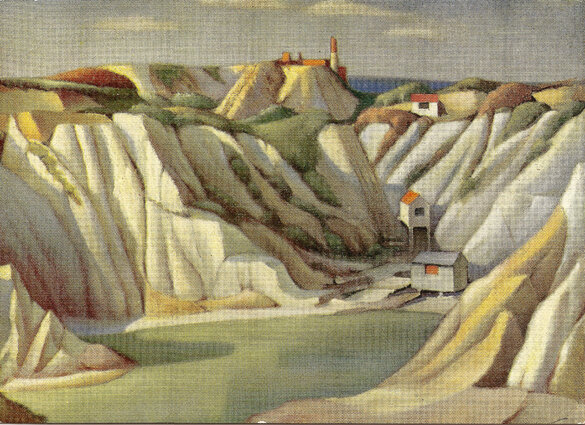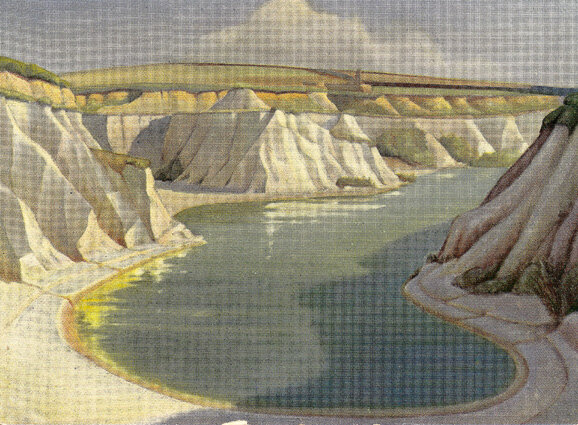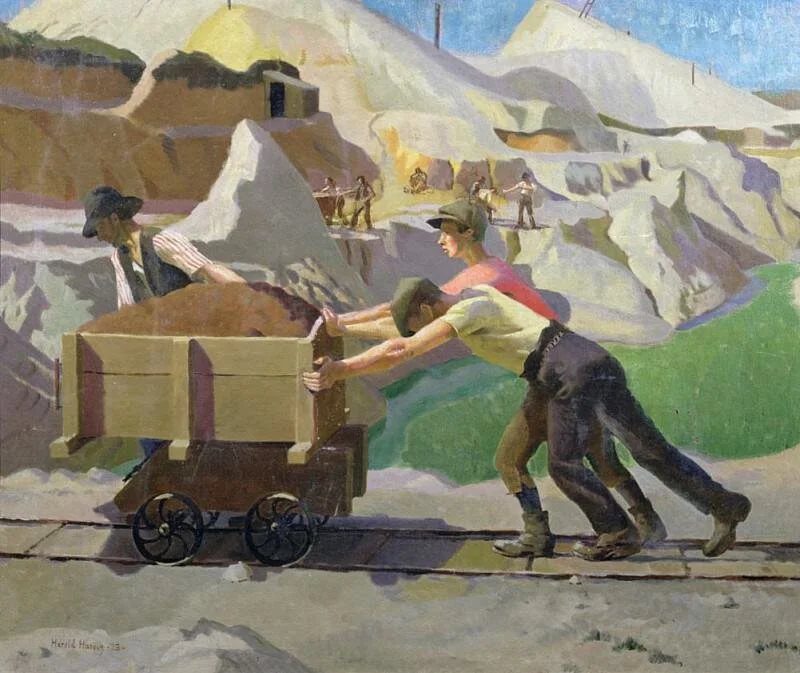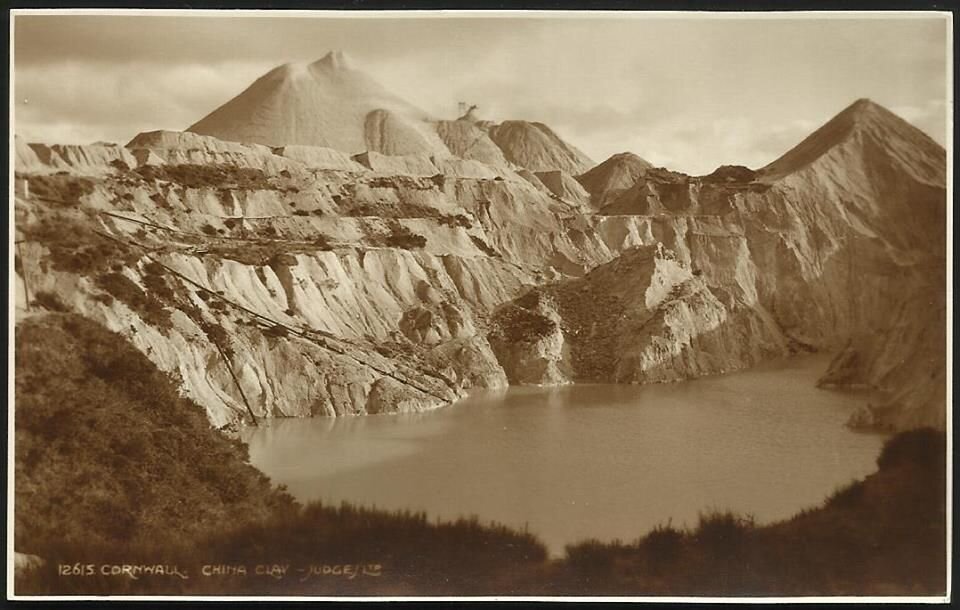The art of China clay
“…the strange, almost fantastic beauty of the landscape, where spoil-heaps of waste matter shaped like pyramids point to the sky, great quarries formed about their base descending into pits filled with water, icy green like arctic pools.”
– Daphne Du Maurier, Vanishing Cornwall
Washing in the Sunshine, 2018, by Kurt Jackson
The Wheal Martyn Clay Works museum, the only one of its kind in the UK, is currently showing the exhibition Clay Country by renowned local artist Kurt Jackson.
Though Jackson is somewhat ubiquitous in the county (you can’t avoid his huge murals when coming into Penzance by train), he’s an undeniably talented artist with a passion for Cornwall and the effect the mining industry has had on the landscape. Though the China clay area around St Austell has many abandoned China clay works, some are still operating, and Jackson has been artist in residence at Littlejohns China clay works, near to Wheal Martyn, observing and documenting the workers. Jackson captures the colour – in particular the azures and bottle greens of the flooded pits – and movement brilliantly in canvases and drawings both small and large. Some of the paintings even contain smatterings of kaolin (China clay) worked into them.
Cornwall of course has a fine tradition of painting, with famous schools in St. Ives and Newlyn, and the dramatic and surreal China clay landscape has long attracted painters.
Herbert Truman (1883-1957) was a member of the St. Ives school and painted quite a few pictures of stylised China clay landscapes (above), always without people, though occasionally with a goat or two. His pictures usually had empty engine houses or huts, showing human intervention but looking almost eerily peaceful and calm, very unlike what it would have been like at the time.
Truman was a popular artist, able to paint in a variety of styles, from realistic to impressionistic, and his paintings were reproduced on railway posters and postcards.
Other artists, such as Harold C. Harvey (1874–1941) and Laura Knight (1877–1970), focused more on the workers.
Harold C. Harvey, The Clay Pit
Laura Knight, The China Clay Pit
Photography has also recorded the changing China clay landscape; early aerial photos really show why the area – beautiful and ugly at the same time – was called the Cornish Alps.
James Ravilious, son of the artist Eric, taught painting and drawing in London before settling in Devon in 1970. Inspired by the photography of Henri Cartier-Bresson, Ravilious taught himself photography and documented rural North Devon over a 17-year period.
He didn’t take many of Cornwall, but this one (below), included in his lovely 2008 book Down the Deep Lanes, of the Carluddon spoil heap, is a stunner.
• Kurt Jackson: Clay Country runs at the Wheal Marrtyn museum until 5 September 2021.
Previously on Barnflakes
Up and down the Cornish Alps










